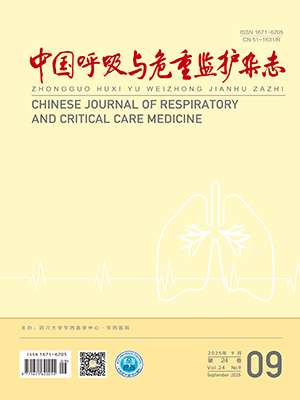| 1. |
Menashe VD, Farrehiab C, Millerab M. Hypoventilation and cor pulmonale due to chronic upper airway obstruction. J Pediatric, 1965, 67(2): 198-203.
|
| 2. |
Herberg D. Sleep disorders and the Pickwick syndrome. Verh Dtsch Ges Inn Med, 1965, 71: 840-849.
|
| 3. |
何权瀛, 陈宝元, 主编. 睡眠呼吸病学. 北京: 人民卫生出版社, 2009, 89-92.
|
| 4. |
葛均波, 徐永健, 主编. 内科学. 北京: 人民卫生出版社, 2013, 128-131.
|
| 5. |
何权瀛, 王莞尔. 阻塞性睡眠呼吸暂停低通气综合征诊治指南(基层版). 中国呼吸与危重监护杂志, 2015, 14(4): 398-405.
|
| 6. |
BaHammam AS. Knowledge and attitude of primary health care physicians towards sleep disorders. Saudi Med J, 2000, 21(12): 1164-1167.
|
| 7. |
Bian H. Knowledge, opinions, and clinical experience of general practice dentists toward obstructive sleep apnea and oral appliances. Sleep Breath, 2004, 8(2): 85-90.
|
| 8. |
Mahendran R, Subramaniam M, Chan YH. Medical students’ behaviour, attitudes and knowledge of sleep medicine. Singapore Med J, 2004, 45(12): 587-589.
|
| 9. |
Southwell C, Moallem M, Auckley D. Cardiologist’s knowledge and attitudes about obstructive sleep apnea: a survey study. Sleep Breath, 2008, 12(4): 295-302.
|
| 10. |
魏晓, 蔡晓岚, 李学忠. 心脏内科临床医师对阻塞性睡眠呼吸暂停低通气综合征的认知度调查. 山东大学耳鼻喉眼学报, 2012, 26(2): 15-17.
|
| 11. |
Luo M, Feng Y, Li TP. Sleep medicine knowledge, attitudes, and practices among medical students in Guangzhou, China. Sleep Breath, 2013, 17(2): 687-693.
|
| 12. |
王武, 刘建红, 雷志坚, 等. 广西部分医院相关科室医师对阻塞性睡眠呼吸暂停低通气综合征知识掌握情况和态度调查分析. 内科, 2013, 8(1): 1-3.
|
| 13. |
Schotland HM, Jeffe DB. Development of the obstructive sleep apnea knowledge and attitudes (OSAKA) questionnaire. Sleep Med, 2003, 4(5): 443-450.
|




